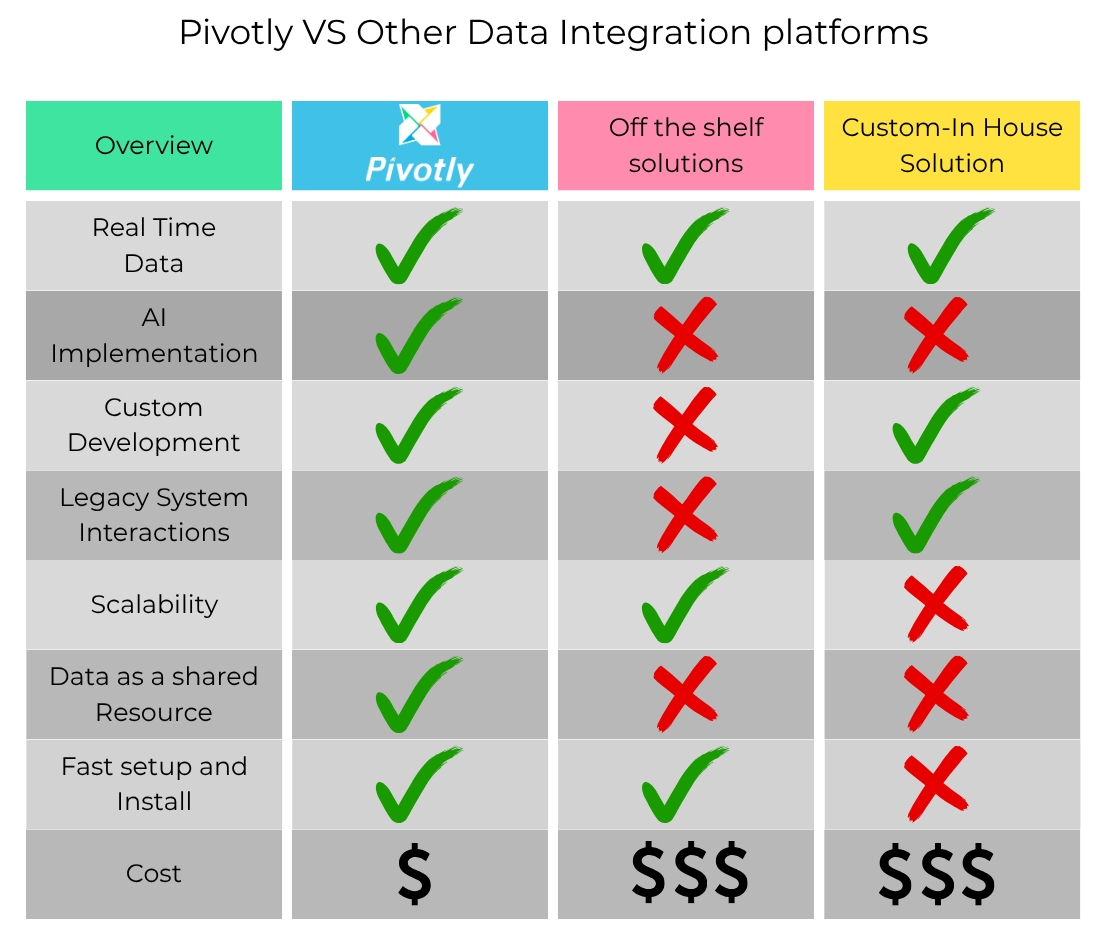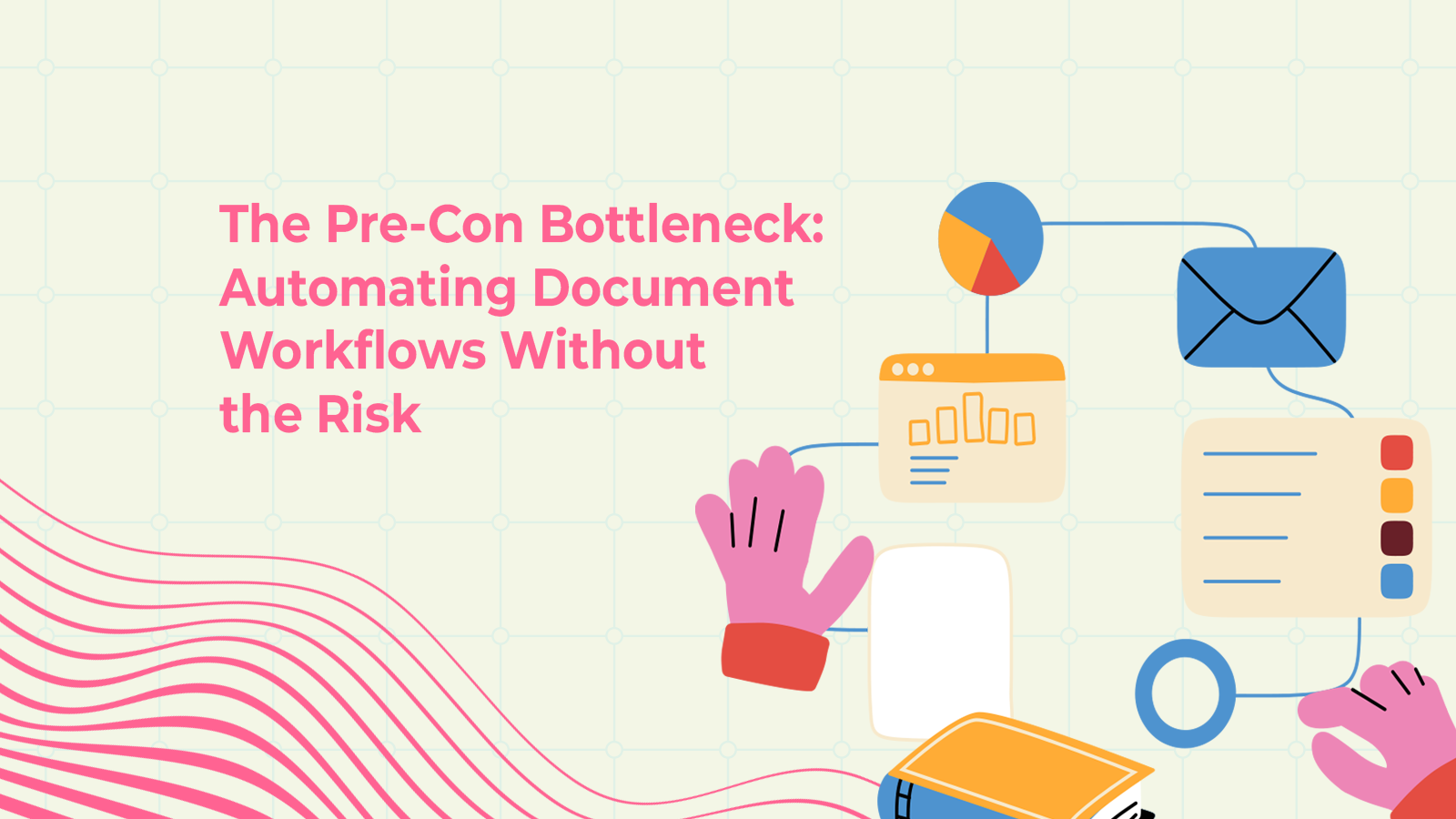Data Platforms, What Fits?
In the high-stakes world of manufacturing and retail, the data integration platform you choose is more than just a piece of technology—it’s the central nervous system of your entire operation. The right choice can streamline processes, unlock innovation, and create a powerful competitive advantage. The wrong choice leads to frustrated teams, bloated costs, and a constant struggle to force a fit with rigid software.
1. Real-Time Data
With real-time data you gain proactive control, a live, accurate view of your operations, and you can anticipate your problems before they escalate. You can optimize logistics on the fly, adjust production schedules based on live demand, and provide a superior customer experience built on trustworthy, reliable data.
2. AI Implementation
The Usual Approach: Other platforms often treat AI as a bolt-on feature, and it’s a common point of failure. They may offer generic AI models, but they lack the infrastructure to feed those models the clean, contextual, and comprehensive data they need to be effective. Making you miss out on the transformative potential of AI.
The Pivotly Approach: We believe that AI automation is an essential tool in your toolbelt. Industries have been recognizing the efficiency that AI brings to the table and offer that same efficiency your company deserves, A Trustworthy, High-Impact AI. With a reliable data pipeline.
3. Custom Development
The Usual Approach: Most off-the-shelf data integration platforms do not have custom development to work with the way that you run your business. They lack integration or they lack features that are valued at your business. Costing your processes that set you apart from your competitors.
The Pivotly Approach: We don’t just enable custom development; we support it. We see your unique processes as assets to be amplified, not obstacles to paved over. Our custom development teams allow us to build your ERP around your workflows. Without you needing to invest endless hours and dollars into your own custom development teams.

4. Legacy System Interactions
The Usual Approach: Most modern platforms are designed for a modern, cloud-native world. They struggle immensely when faced with the reality of most enterprises: a mix of old and new systems. They promise to integrate your data, but not all legacy systems are compatible with their platform, forcing you to be stuck with your outdated legacy systems. Your legacy systems stay as individual data silos and not Inegrated with the rest of your ERP, leading to incomplete data and an eventual “rip and replace” project.
The Pivotly Approach: Our custom development team allows us to bridge the gap between legacy and modern systems. We have deep expertise in building robust, secure data pipelines that unlock information from your most entrenched platforms allowing us to build connections to systems that off the shelf solutions cannot.
5. Data as a Shared Resource
The Usual Approach: These platforms often create new, more organized data silos. Data is confined within the platform itself, accessible only to those licensed to use it. The finance team sees the finance data, and the sales team sees the sales data, but a holistic, cross-functional view is nearly impossible to achieve without complex, manual exporting, and reconciliation. Missing this cross-functional view leads to departments working from different assumptions and conflicting metrics and damaging strategic alignment.
The Pivotly Approach: We build a data fabric that makes information a true enterprise asset, available to anyone who needs it. Data becomes centralized, accurate, accessible, and Decision-making becomes faster and more coherent. Rather than Middleware playing fetch when you want to access data, it is right at your fingertips, putting your data at the center of your business, not Middleware.
6. Scalabitlity
The Usual Approach: The high upfront licensing fee is just the beginning. The Total Cost of Ownership (TCO) quickly spirals out of control due to a cascade of hidden expenses: paying for expensive and often-underwhelming professional services for customization and the internal cost of building and maintaining workarounds. You also become limited on systems that it can add to its toolbox due to restrictions of compatible software with your off the shelf solution or custom in house solution.
The Pivotly Approach: Our pricing model is transparent and value-based. The investment is directly tied to building a solution that solves your specific business challenges. Pivotly’s different services can offer more benefits at a lower cost than other options.
7. Setup and Install time
The Usual Approach: This is a primary selling point of an off-the-shelf solution: a fast, standardized installation. You can be “up and running” in weeks because the system is generic. It doesn’t need to account for your specific processes or complex data landscape resulting in your business forcing a fit that doesn’t work, pushing issues down the road rather than solving them. In-house solutions have the inverse problem; you eventually get a solution that fits your business but after large investment, development and deployment time.
The Pivotly Approach: The best of both worlds without delaying your business vision. Pivotly’s established integrations solve immediate issues, while our custom development assures that any issues down the road can be easily resolved
Let’s build something better.


